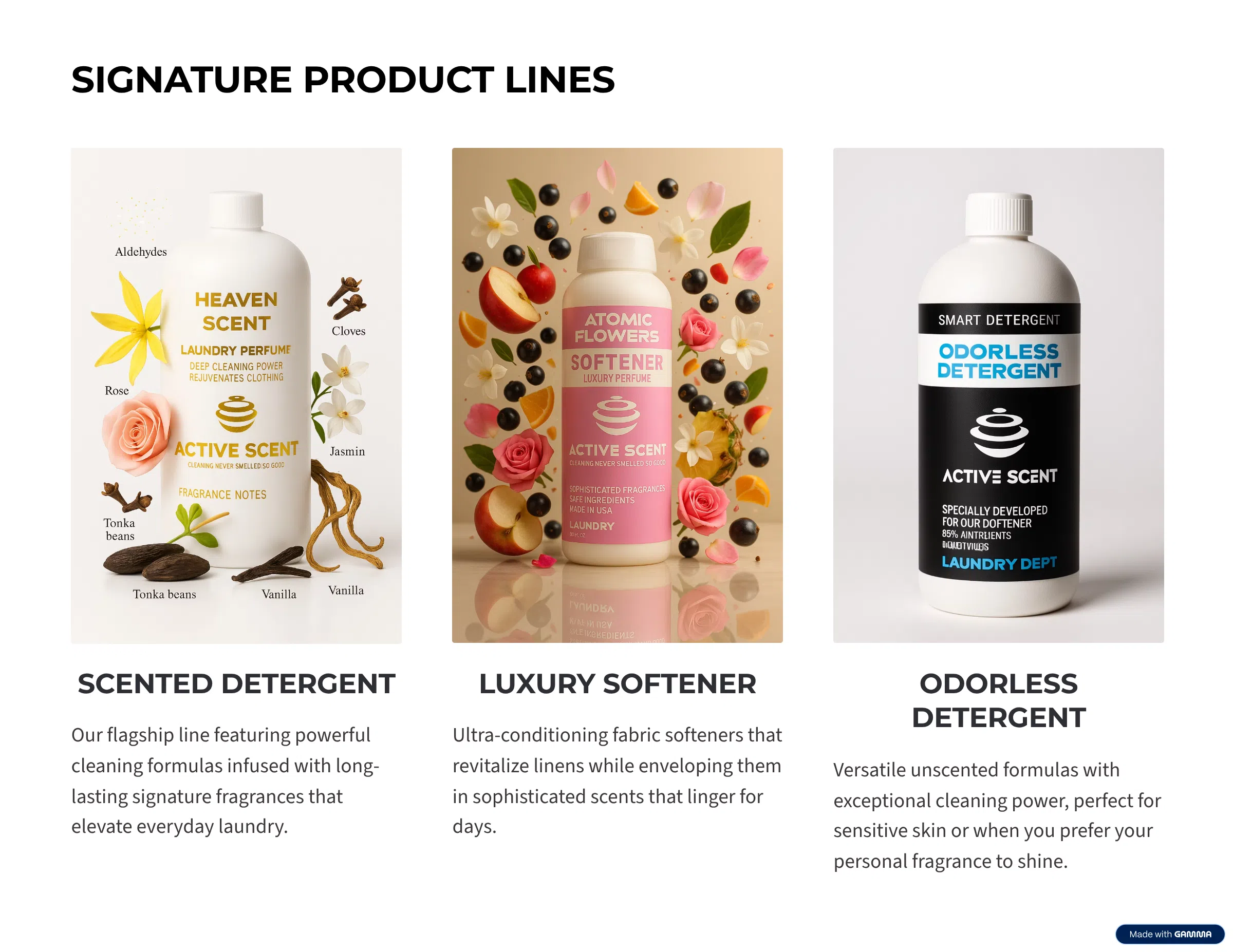
How to Wash Designer Clothes Without Ruining Them
When you bring home a designer piece, you're not just buying clothing—you're investing in artistry. It’s about the specific way fine silk drapes, the sharp structure of a perfectly tailored wool coat, or the tiny, handcrafted details you can’t find anywhere else. These aren't just garments; they're expressions of contemporary individuality, made with premium, avant-garde materials that your standard laundry routine can easily ruin.
Why Your Designer Clothes Deserve Better Care
Think about it: your everyday detergent and the high-heat cycle on your machine are built for durability, not delicacy. For special fabrics like cashmere, linen, or intricate lace, those harsh conditions are a direct threat. They're a fast track to shrinking, fading, and irreversible fiber damage, stripping away the very qualities that made you fall in love with the piece in the first place.
The True Cost of Improper Care
Ignoring the care label on luxury fabrics is an expensive mistake. The global apparel market, valued at roughly USD 1.77 trillion in 2024, shows just how much we're all investing in quality clothing. As people spend more on their wardrobes, protecting those assets is more critical than ever. Learning how to properly wash your designer clothes isn't just about cleaning; it's about protecting your investment's value. To see the full picture, you can explore more data on apparel market trends and the growing focus on garment preservation.
This is where specialized care becomes non-negotiable. It's the difference between a sweater that lasts a season and one that becomes a cherished, timeless part of your collection.
The goal isn't just to clean; it's to preserve. A protective wash maintains the garment's original shape, texture, and vibrancy, ensuring it looks and feels exceptional for years to come.
Elevating Laundry to a Sensory Ritual
Caring for your best pieces shouldn't feel like a chore. With the right approach, it can become a luxurious, sensory experience—a ritual you actually look forward to. Imagine POWERFUL DETERGENTS FUSED WITH LUXURIOUS FRAGRANCES, where each product delivers a spark of joy and a surge of confidence.
This method is a bold tribute to the spirit of renowned fragrance houses. Inspired by icons like Dior, Mugler, and Chanel, our fragrances are bold, hypnotic, and unforgettable olfactory statements. Picture deep, earthy patchouli fusing with the burning radiance of amber, enveloped in creamy tonka bean and rich guaiac wood. Suddenly, the simple act of doing laundry becomes a ritual that feels just as refined as your clothes look. LAUNDRY NEVER FELT SO GOOD!
Decoding the Secrets on Your Care Label
That tiny tag stitched into the seam of your garment isn't just a suggestion. Think of it as a direct message from the designer—your personal roadmap to preserving the piece exactly as it was intended to be.
When you're dealing with fine fabrics and expert tailoring, this label is your single most important guide.
Ignoring it can be a costly mistake. I've seen it happen: a structured wool blazer loses its sharp silhouette forever after a hot wash, or a delicate lace trim gets shredded in the wrong machine cycle. A custom-dyed silk blouse can bleed its vibrant color, leaving you with a pale imitation of what you once loved.
Reading Beyond the Symbols
Understanding the basics is one thing, but interpreting them for high-end fashion requires a bit more nuance. Those symbols are hinting at the fabric’s unique sensitivities.
A "Do Not Tumble Dry" icon on a cashmere sweater, for instance, isn't just about preventing shrinkage. It’s about protecting the delicate fibers from the friction and intense heat that cause pilling and distortion, ruining that buttery-soft feel.
Similarly, when a silk garment says "Hand Wash Only," it’s a direct warning. The mechanical stress of a machine can weaken the natural protein fibers, stripping away their signature luster for good.
The care label is the garment's instruction manual. Following it isn't just about avoiding damage; it's about actively preserving the fit, feel, and color that made you fall in love with the piece in the first place.
Common Designer Fabric Care Instructions
To help you make confident decisions at a glance, I've put together a quick reference table. This translates those cryptic symbols into real-world actions for the luxury materials you'll encounter most often.
| Fabric Type | Recommended Washing Method | Water Temperature | Drying Method |
|---|---|---|---|
| Silk | Hand wash is always best. If you must use a machine, use a mesh bag and a true delicate cycle. | Cold water (below 30°C / 86°F) is non-negotiable. It protects the fibers and prevents color loss. | Never wring it out. Gently roll the garment in a clean towel to absorb water, then hang it on a padded hanger away from sun. |
| Cashmere | Hand wash in lukewarm water. The gentlest "wool" or "hand wash" machine cycle can also work. | Stick to lukewarm water (30°C / 86°F). This cleans effectively without shocking the delicate fibers. | Lay flat on a dry towel or mesh rack, gently reshaping it. Never hang cashmere—its own weight will stretch it out of shape. |
| Structured Wool | For tailored pieces like blazers or trousers, "Dry Clean Only" is the only safe bet to maintain their shape. | N/A (Let your trusted dry cleaner handle it). | N/A (Professionally pressed). |
| Lace | Always hand wash gently in cold water. If it's part of another garment, place it in a mesh bag before washing. | Cold water is critical. It stops the delicate threads from shrinking, weakening, or breaking. | Lay flat to dry on a towel. This prevents the intricate patterns from stretching, snagging, or tearing. |
Making these small adjustments to your laundry routine ensures every piece receives the precise care it needs to last for years. This isn't just about protecting your clothes; it's about elevating an everyday ritual into an act of preservation.
The Art of Hand Washing Delicate Garments
For your most treasured pieces—the ones with delicate embroidery, fine silk, or soft cashmere—hand washing isn't just a chore. It's an act of preservation.
This is your chance to take complete control, giving a garment the gentle, attentive care it deserves. It’s a level of detail that even the most advanced washing machine simply can't replicate. Think of it as the ultimate sign of respect for the craftsmanship you invested in.
Getting started is simple but crucial. Always begin with a clean basin or sink to avoid transferring any residue. Fill it with cool to lukewarm water, making sure it never exceeds 30°C (86°F). Hot water is the enemy of delicate fibers; it can cause them to shrink, bleed color, or lose their beautiful shape.
The Right Foundation: Choosing Your Detergent
This is where so many people go wrong. Standard detergents are formulated to be aggressive, loaded with enzymes and chemicals designed for tough stains on durable fabrics. For your luxury items, you need a far more refined approach.
Start with a powerful, high-performance detergent that is completely unscented. Active Scent's odor-free laundry detergent has been carefully formulated for a deep and effective clean, without competing fragrances. This creates the ultimate neutral base, preparing the fibers to perfectly complement our range of luxury scented fabric softeners later on.
Mastering a Gentle Touch
With your basin ready and detergent dissolved, it’s time. Submerge the garment completely, using slow, rhythmic motions.
- For silks and chiffons: Gently swirl the fabric through the water. Absolutely no scrubbing or pulling, which can easily snap the fine threads. For a deeper dive, see our complete guide on how to properly care for silk garments.
- For cashmere and fine knits: Use a gentle pressing or squeezing motion. Ball the garment up softly in your hands and press the sudsy water through it. This cleans deeply without the friction that causes pilling.
The secret is to agitate the water, not the garment itself. Your goal is to move water through the fibers to lift impurities away, rather than scrubbing the fabric directly. That’s how irreversible damage happens.
The Critical Final Steps
After just a few minutes of gentle movement, the washing is done. Drain the soapy water and refill the basin with clean, cool water to rinse. Swirl the garment again until all the suds have vanished. You may need to do this a couple of times to ensure no residue is left behind.
Finally, never wring or twist your delicate items. This is the fastest way to stretch the fibers and completely ruin the piece's silhouette. Instead, carefully lift the garment from the water, supporting its full weight so it doesn’t hang and stretch.
Lay it flat on a thick, clean towel. Roll the towel up with the garment inside, and press gently to absorb the excess moisture. This simple technique protects the integrity of your most beautiful clothes, ensuring they feel and look exceptional for years to come.
Using Your Washing Machine with Confidence
While hand washing is the gold standard for your most fragile pieces, let’s be realistic: many designer garments can handle a machine wash perfectly well. The secret isn't avoiding the machine—it's mastering it. With a few smart moves, you can wash with absolute confidence, avoiding any laundry-day disasters.
Your first line of defense is the humble mesh laundry bag. Think of it as a protective shield for your clothes. For anything with delicate straps, fine weaves, or embellishments, this is non-negotiable. It prevents beads from snagging, lace from tearing, and straps from tangling themselves into a mess.
Setting Your Machine for Success
Once your garment is safely tucked away in its mesh bag, your machine settings are the next critical step. Get these wrong, and all your careful prep work is for nothing.
Always, always choose the most gentle options your machine offers:
- The Delicate Cycle: This is your best friend. It uses a slower agitation and a shorter wash time, coming as close as possible to the gentle touch of hand washing.
- Cold Water: Stick to cold, always below 30°C / 86°F. Hot water is the enemy of fine fabrics, leading to shrinkage, color bleeding, and damage to fibers like silk or modal.
- Low Spin Speed: A high-speed spin cycle can feel like a rollercoaster for your clothes, stretching and distorting their shape. Opt for the lowest spin setting to gently press out excess water without stressing the seams.
Don't forget about how you load the machine. It's a subtle detail, but it matters. Never overcrowd it. Your designer pieces need room to move freely, allowing the detergent to circulate and clean properly without the friction of a packed drum. A lighter load is always a safer load.
Choosing a Detergent That Complements Your Care
The final piece of the puzzle? The right detergent. You need a formula that provides powerful cleaning with zero interference.
A common mistake is grabbing a standard, heavily perfumed detergent. It might clean, but it leaves behind an overpowering scent that clashes with everything else. The goal is a pure, blank canvas, not a fragrance war.
This is precisely why a high-performance, fragrance-free detergent is the ultimate choice for luxury care. Active Scent's odor-free laundry detergent, for example, was formulated for a powerful, effective clean that leaves behind nothing but freshness. It’s the perfect neutral base, designed to allow the bold, hypnotic notes of a luxury fabric softener—like fiery pimento berries and smoky styrax—to truly take center stage. Each fragrance is composed of natural and ethically sourced ingredients, offering a refined and distinguished sensory experience.
By mastering these techniques, you can ensure even your most cherished pieces, from structured white shirts to designer denim, get the care they deserve. For more specific advice, our guide on how to wash white clothes has extra tips to keep them looking flawless.
Proper Drying and Storing for Longevity
The ritual of caring for designer clothing doesn’t end when the wash cycle chimes. In many ways, it’s just beginning. How you dry and store your garments is just as critical as how you wash them, and a single misstep can undo all your careful work.
Let’s be clear: the tumble dryer is the sworn enemy of luxury fabrics. That intense, dry heat is a death sentence for delicate fibers like wool, silk, and cashmere, causing irreversible shrinkage and warping their beautiful texture. It also fries the elastane in stretch fabrics, leaving them saggy and sad. For the pieces you truly love, air-drying isn't just an option—it’s the only way.
The Art of Air Drying
Simply hanging a garment up to dry isn't enough. You have to consider the fabric's structure, its weight, and how it will behave when damp. Getting this wrong can stretch out a sweater or leave permanent puckers in a silk blouse.
-
For Knits (Cashmere, Wool, Fine Cottons): These must always be laid flat. When a knit is wet, its own weight becomes a liability, pulling the fibers downward and permanently stretching the garment out of shape. The right way is to lay a thick, clean towel on a flat surface, gently reshape your sweater or knit top on it, and let it dry away from direct heat or sun.
-
For Wovens (Silk Blouses, Linen Trousers, Structured Shirts): These can be hung, but your choice of hanger is everything. Forget those flimsy wire hangers from the dry cleaner. They create ugly, stretched-out marks in the shoulders. Instead, invest in padded or wooden hangers with a wide, curved shape that supports the natural drape of the garment.
Creating the Ideal Storage Environment
Once your pieces are perfectly dry, the final act of preservation begins. A cluttered, overstuffed closet can be just as damaging as a harsh wash cycle, leading to stubborn wrinkles, snags, and even discoloration.
A cherished garment spends over 99% of its life in your closet. Creating the right environment isn’t an afterthought—it’s the final, crucial step in protecting your investment.
First, give your clothes room to breathe. When garments are crushed together, airflow is restricted, and delicate fabrics can be permanently creased. For special pieces you don't wear often, use breathable cotton garment bags. They offer protection from dust while preventing the moisture buildup that plastic bags trap.
In an age of online shopping, mastering these final steps is more important than ever. The global luxury apparel market, which soared to nearly USD 60 billion in 2022, has shifted online, meaning fewer of us receive that hands-on care advice from a boutique specialist. If you're curious, you can explore detailed market analysis and projections that show just how much consumer habits have changed.
This digital shift puts the responsibility of preservation squarely on us, the owners. The complete formula for impeccable garment care is a thoughtful blend of the right washing technique, meticulous drying, and mindful storage. To perfect the very first step of this ritual, see our guide on selecting the best luxury laundry detergent and build a foundation of care that ensures every piece remains pristine.
Answering Your Biggest Questions on Designer Garment Care
Even the most seasoned fashion lovers run into questions when it comes to caring for their favorite pieces. Let's clear up some of the common concerns I hear all the time, so you can handle your wardrobe with absolute confidence.
Can I Just Use My Regular Detergent on Designer Clothes?
It’s a tempting shortcut, but one you’ll almost always regret. That standard detergent in your laundry room is built for battle—packed with harsh enzymes and optical brighteners designed to obliterate stains on tough fabrics like cotton or polyester.
Those same aggressive ingredients are a disaster for delicate materials. On silk, cashmere, or fine wool, they strip away natural oils, dull vibrant colors, and literally weaken the fibers over time. It’s a fast track to ruining the very things you love most.
For a truly EXCEPTIONAL product that respects the integrity of the fabric, you need a different philosophy. A high-performance, fragrance-free detergent gives you a powerful clean without any of the damaging chemicals. Think of it as the perfect neutral canvas, designed to work in harmony with a luxury scented fabric softener. You get a flawless clean with zero scent interference.
How Often Should I Really Be Washing My Designer Jeans?
Ah, the great denim debate. The short answer is: way less often than you think.
Premium denim is crafted to break in and mold to your body, creating a fit that’s uniquely yours. Every wash interrupts that process, and it’s especially brutal on raw or dark-wash denim, accelerating fading.
Unless you've had a major spill, aim to wash your designer jeans after every 5-10 wears. In between, just spot-treat small stains and hang them to air out. This is how you preserve the deep color, the custom-like fit, and the character that makes them special.
Here's a hard truth: the less you wash premium denim, the better it looks. Over-washing is the fastest way to make an expensive pair of jeans look completely ordinary.
What Do I Do If a Garment Is Missing Its Care Label?
That incredible vintage find with a missing tag doesn't have to be a gamble. When you’re flying blind, the golden rule is to fall back on the safest method possible: hand washing in cold water. It’s the universal safety net for almost any delicate fabric.
Just a small amount of a gentle, unscented detergent is all you need. Submerge the garment, give it a few gentle squeezes, and avoid any harsh rubbing or wringing. After a quick rinse, carefully roll it in a clean towel to press out the excess water, then lay it flat to dry away from direct heat or sun.
Dry Clean or Wash at Home? When to Make the Call
Knowing when to trust a professional is a key part of luxury care. I always head to a reputable dry cleaner for:
- Structured Pieces: Think tailored blazers, coats, and formal trousers. Their internal construction—the very thing that gives them shape—can be completely ruined by water.
- Delicate Embellishments: Anything with intricate beading, sequins, or fine leather details needs the specialized solvents a dry cleaner uses.
- "Dry Clean Only" Labels: If the designer put it on the tag, it's there for a reason. It's best to follow their lead.
But for many of your most beautiful silks, cashmeres, and fine knits, a careful hand wash at home is not just an option—it’s often better. At Active Scent, our lead perfumer and aroma designer masterfully master light and shadow, creating scents that are as enigmatic as they are energetic and refreshing. A careful wash at home is your chance to infuse your garments with a truly personal and luxurious scent—a bold tribute to the spirit of renowned fragrance houses like Le Labo and Chanel.
It’s time to elevate your laundry ritual into a luxurious sensory experience. With Active Scent, you get a powerful, protective clean while enveloping your clothes in unforgettable fragrances inspired by the world's most iconic perfumers. Discover the collection and transform your laundry today.










